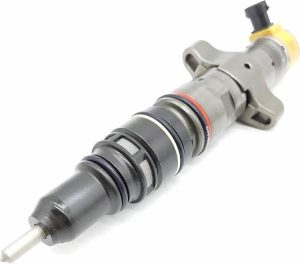Fuel injector is a system that introduces fuel into an internal combustion engine, most commonly automotive engines. It has become the primary fuel delivery system used in automotive petrol engines, replacing carburetors due to their greater efficiency, smoother operation, and more controlled emissions.
Fuel Injector System Components: A Comprehensive Overview
A fuel injection system is a crucial part of modern internal combustion engines. It ensures efficient combustion by delivering fuel precisely to the engine’s combustion chamber or cylinders. Let’s explore the essential components of a fuel injection system:
1. Fuel Tank
The fuel tank serves as a reservoir for the fuel supply. It helps maintain the fuel temperature below the flash point and dissipates heat from the fuel returned from the engine.
2. Fuel Pump
The fuel pump transfers fuel from the tank to the fuel injectors. It can be either electric or mechanical. The primary purpose of the fuel pump is to maintain consistent fuel pressure.
3. Injection Pump (Diesel Engines)
In diesel engines, the injection pump is responsible for injecting fuel into the cylinders. It operates indirectly from the crankshaft via a toothed belt (often the timing belt) that also drives the camshaft.
4. Fuel Filter
The fuel filter plays a critical role in preventing dirt, debris, and contaminants from reaching the fuel injectors. A clogged fuel filter can reduce engine performance and potentially damage the fuel injection system.
5. Governor
The governor regulates fuel delivery to the engine cylinders, maintaining a constant speed for various load conditions. It’s essential for controlling the speed of generators driven by the engine.
6. Fuel Injectors
Fuel injectors atomize the fuel and deliver it under high pressure into the combustion chamber. They ensure precise fuel metering and efficient combustion. Modern fuel injectors are electronically controlled for optimal performance.
7. Throttle Body
The throttle body regulates the airflow into the engine. It works in conjunction with the fuel injectors to achieve the correct air-fuel mixture for combustion.
8. Engine Control Module (ECM)
The ECM, also known as the engine control unit, manages the entire fuel injector system. It monitors various sensors (such as oxygen sensors, temperature sensors, and crankshaft position sensors) and adjusts fuel delivery accordingly. The ECM plays a vital role in optimizing fuel efficiency, reducing emissions, and enhancing overall engine performance.
In summary, a well-functioning fuel injection system relies on these essential components working together seamlessly. Whether you’re driving a car, operating heavy machinery, or using a generator, understanding these components helps appreciate the technology behind efficient and clean combustion.
Advancements in Fuel Injector Systems
From the early mechanical fuel injection systems to the more advanced electronic fuel injector systems, significant progress has been made to enhance fuel efficiency, engine performance, and emission control. Let’s explore some notable advancements:
- Common Rail Fuel Injection:
- Common rail fuel injection systems have revolutionized the automotive industry. These systems use a high-pressure common rail to deliver fuel to individual injectors. By precisely controlling the fuel injection timing and pressure, common rail systems improve combustion efficiency and reduce emissions.
- Benefits: Better fuel economy, reduced NOx emissions, and quieter operation.
- Gasoline Direct Injection (GDI):
- GDI systems directly inject fuel into the combustion chamber, bypassing the intake manifold. This allows for better mixing of air and fuel, resulting in improved combustion efficiency.
- Benefits: Enhanced power output, reduced fuel consumption, and lower emissions.
- Diesel Fuel Injection Systems:
- Modern diesel engines utilize advanced fuel injection systems, such as high-pressure common rail and unit injectors. These systems optimize fuel delivery, leading to cleaner combustion and increased power.
- Benefits: Improved fuel efficiency, reduced particulate matter emissions, and better torque characteristics.
- Optimized Spray Characteristics:
- Researchers have focused on understanding spray behavior and optimizing injector design. Fine-tuned spray patterns ensure efficient fuel atomization and distribution within the combustion chamber.
- Benefits: Enhanced combustion, minimized unburned fuel, and reduced emissions.
- Alternative Fuels Integration:
- Advancements in fuel injection systems have facilitated the adoption of alternative fuels, such as biofuels, hydrogen, and synthetic fuels. These systems can adapt to different fuel properties and combustion requirements.
- Benefits: Diversification of fuel sources, reduced dependence on fossil fuels, and environmental sustainability.
In summary, advancements in fuel injector systems have transformed the automotive landscape, providing more efficient and precise fuel delivery to engines. These systems have replaced traditional carburetors, offering better fuel economy, reduced emissions, and improved performance. As we continue to address climate change, ongoing research and innovation will drive further improvements in fuel injection technology, making transportation more sustainable and environmentally friendly.




1 thought on “5 Powerful Explanation About How Fuel Injector Works”